TIFF ’23: In “Seagrass,” marriage is a fragile ecosystem
 Friday, September 8, 2023 at 5:45PM
Friday, September 8, 2023 at 5:45PM 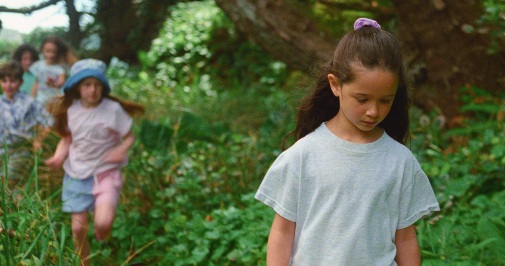
Down the Pacific coast, there’s a place that looks like heaven but is no safe haven. You reach it by boat, sailing over turquoise waves, the wind carrying hopes of healing and promises of solutions to problems that have none. First-time feature director Meredith Hama-Brown and cinematographer Norm Li capture the environment’s full spectrum of color in their new 1990s-set film Seagrass, rendering bleak material beautiful. Skin tones are sun-kissed, while the deepest shadows are cobalt blue. It’s like we’re seeing the shoreline through a painter’s eyes. We’re not.
Rather than the artist’s gaze, we experience a family’s troubled perspective. They’re two girls and their parents, bound to a couple’s retreat where they hope their marriage will find salvation…
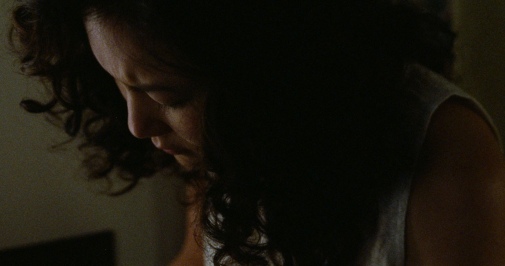
You don't need a reason to be unhappy. Sometimes, you just are, with your brain as the great betrayer. Judith thinks she’s unhappy for no reason, but the camera picks up on enough causes for her sorrow. Her husband Steve would, too, if he were prone to careful observation. Instead, the man’s more of a blunt object struck against her fragile state, exacerbating everything bad even when he clumsily tries to help. Not that Steve tries hard or often. That said, his presence at the retreat is, in some ways, an attempt to solve things, however reluctantly.
That’s plain to see from the first group therapy session, when his face is a mask of pure skepticism, eyes roaming in hopes of finding someone equally skeptical who might silently commiserate with his predicament. Meanwhile Judith listens to everything with eyes still, focused, and perhaps too severely for what should be a liberating exercise.
This couple is a study in contrasts, but juxtapose them to another pair, and even more fractures are visible. That’s what happens when they get close to Pat and Carol, a childless couple who visit the retreat every year. Their presence disturbs Judith and Steve’s fragile state. For him, it’s an emasculating experience, constantly comparing himself to Pat and coming up short. Moreover, you sense his discomfort in witnessing the other man’s connection to Judith, both of Asian descent and now married to a white spouse. For his part, Pat seems happy to keep in touch with his roots, and he’s keen on sharing that with a new friend. Judith, not so much.
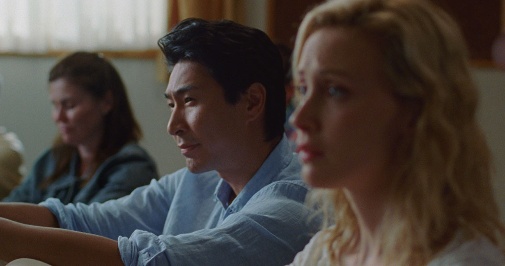
As they arrive at the retreat, we quickly understand that Judith’s still stuck in grief caused by her mother’s recent death. Her notions of marital duty, and always placing responsibility above happiness plague her waking life in that way only generational trauma can. The biracial nature of her relationship also bears down on her already troubled conscience as their children try to navigate the realities of complicated ethnic identities caught between whiteness and their Japanese ancestry.
At this crossroad of characters’ paths, we may find one of Seagrass’ primary unbalances – its structure. As you might have realized, the film splits into two parallel lines. There’s Judith and Steve’s therapy failure and the misadventures of 11-year-old Stephanie and little 6-year-old Emmy. For the most part, no matter how insightful the parent’s story might be, it’s within the children’s limited perspective where Hama-Brown’s brilliance comes to full bloom. Her staging of scenes with the adult cast is often elegant, guiding Ally Maki to a splendorous turn with shades of Edward Albee drama. Still, nothing compares to the haunting properties of the girls’ scenes, from Stephanie’s peer pressure dilemmas to Emmy’s attachment to a little beach ball, or the pull she feels towards a mystical cave on the beach.
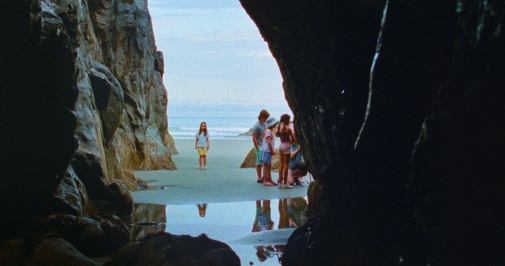
Look into its depths, think of someone dead, and they’ll return to you. For the kid, her grandmother invades her thoughts, a ghost summoned in immaterial terms if not for the camera’s shapeshifting properties. There might not be a spectral entity looking over the family. Still, a floating screen suggests its presence, a simple issue of framing and movement enough to breach the limits of reality. This tangent will be too drastically different from the bulk of the film for some viewers, but I found it a fascinating leap into the dark. If nothing else, it hones in on how the child’s mind can articulate the shock of loss in ways grown-ups don't comprehend.
Well-observed and sourced from a very personal place in the filmmaker’s memory, Seagrass is a bit like the past lives of a treasured blanket Judith keeps from her childhood home. Her mother used to unravel old sweaters, taking the yarn and remaking it into blankets to avoid waste. She did it not because she liked it but because she had to, a sentiment the daughter carries with her into a marriage where love might have never been a part of the equation. Seagrass is such a piece, four damaged sweaters unraveled and put back together, united but not really. Loose threads poke all over the place, and some colors are brighter than others.
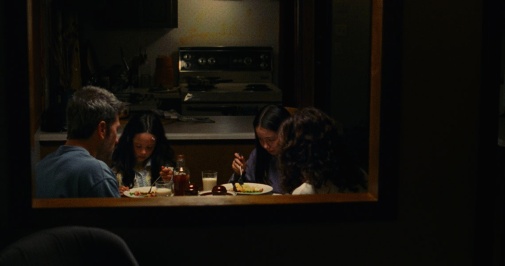
If you hold it close, you’ll feel warm, smell sea salt on the wool, taste dried tears crusted within its loops. The touch scratches a great deal, bad memories knit too close to good ones; you can’t feel joy without a kiss of sadness following suit. And so, it comforts as much as it hurts, disquiet an essential part of its embrace. If, as the retreat’s therapist says, marriage is an ecosystem, family is this old blanket, and so is this promising debut – I have great hopes for Meredith Hama-Brown’s cinematic future.


